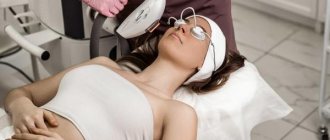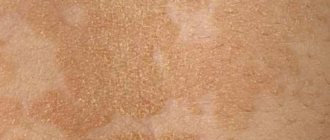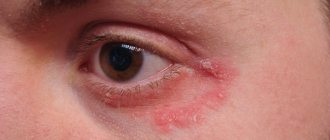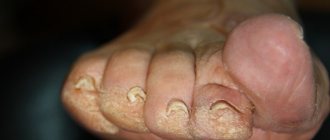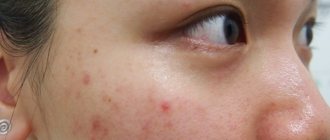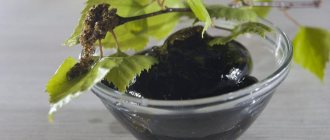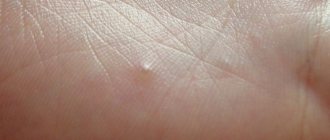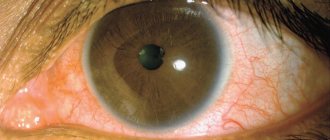From this article you will learn:
- Causes of foot hyperkeratosis
- Treatment of hyperkeratosis of the skin of the feet at home
- Treatment of hyperkeratosis of the skin of the feet in the podiatrist’s office
- Treatment of hyperkeratosis of the skin of the feet with medications
- Hardware treatment of foot hyperkeratosis
- Effective prevention of foot hyperkeratosis
Hyperkeratosis of the feet is excessive keratinization and thickening of the epidermis in the sole area. As a result, the skin becomes rough and dry, calluses and even bleeding cracks may appear. That is why such a pathological process applies not only to cosmetic problems.
If you are also familiar with this condition of the dermis, which makes it difficult to wear light sandals and flip-flops in the summer heat, you may want to pay extra attention to your feet. The disease can be diagnosed by a podologist, dermatologist or orthopedist. But you will learn about methods of treatment and prevention of hyperkeratosis of the feet from our article.
Effective procedures for the treatment of hyperkeratosis
Phototherapy
Plasma therapy
NeoGen procedure
Mesotherapy
Peeling
Medical pedicure
One of the fairly common types of skin diseases is hyperkeratosis. This is an excessive thickening of the stratum corneum of the epidermis. With the development of such a pathology, horn cells begin to rapidly divide and desquamation is impaired, which ultimately leads to thickening of the skin. Moreover, the thickening can reach several centimeters. According to statistics, hyperkeratosis is observed in approximately 20% of men and 40% of women. As a rule, the problem occurs in individual areas and leads to a significant deterioration in the appearance of the skin.
In children, the pathology can be observed at the age of 1–3 years, and it mainly affects the face and hands. In adults, changes in the stratum corneum are more common on the feet and toenails, as well as on the face and scalp. There are several types of the disease, which have their own symptoms and causes of development. Let's figure out what hyperkeratosis is and whether such a pathology is dangerous for health.
Features of the pathology
The concept of hyperkeratosis comes from two Greek words: hyper – “many” and keratosis – “formation of keratin”. In fact, hyperkeratosis is not an independent disease - most often it is just a symptom of other diseases. For example, such a problem occurs with lichen, ichthyosis or erythroderma. However, thickening of the stratum corneum can sometimes appear in a healthy person: for example, the feet, elbows and knees are often susceptible to this problem.
Hyperkeratosis is considered a potentially life-threatening disease, but treatment is still recommended. Pathology can cause serious cosmetic defects, which often lead to social maladaptation and decreased self-esteem.
The basis of the stratum corneum of the skin is made up of horny plates, which contain the protein keratin. Typically, the layer includes 15–20 layers of horny scales; when the epidermis thickens, their number can reach 100.
Essentially, the stratum corneum is the end result of the division of keratinocytes of the epidermis, which is why it has a specific structure. It is based on horn cells held together by intercellular lipids. Normally, this layer of the epidermis is constantly renewed: the horny scales are peeled off and replaced with new cells.
The desquamation process starts in the basal layer of the skin, where keratinocytes are produced. After this, the cells gradually move to the upper layers, losing their nucleus and organelles and turning into flat scales, which develop into the stratum corneum.
Normally, the epidermal renewal cycle lasts about 21–28 days; with age it slows down and can reach 45–72 days. In addition, the state of cellular metabolism is influenced by various factors such as lifestyle, nutrition, and hormonal levels of the body.
With hyperkeratosis, the patient's production of proteolytic enzymes, which regulate the processes of destruction of protein bonds between the cells of the stratum corneum, is disrupted. As a result, there is no desquamation of old cells, and due to the accumulation of keratinocytes, a significant thickening of the epidermis occurs.
Doctor Komarovsky's opinion
Before you begin to treat the disease, you need to find out why it appeared , and only then take any action.
In some cases, the disease goes away on its own , however, sometimes the child still requires adequate therapy.
You should not self-medicate, since children's skin is very sensitive to the effects of many medications that can cause serious irritation. Therefore, only a doctor should prescribe therapy.
Types of pathology
The following forms of hyperkeratosis are distinguished:
- Follicular. This type of pathology is characterized by damage to the hair follicles. Most often, follicular hyperkeratosis appears in areas with dry, dehydrated skin. The reasons are heredity, vitamin deficiency, inflammatory skin diseases or neglect of personal hygiene. There are two forms of pathology: with follicular hyperkeratosis of type I, spiky nodules and plaques appear around the hair follicle, with type II - a hemorrhagic rash caused by a lack of vitamin C and K. Very often, the ducts of the hair follicles are clogged with blood or red pigment.
- Lenticular. This form is characterized by the appearance of small “plugs”, most often on the hair follicles, which look like keratinized spots. The reasons for the development are not exactly known, but most often the problem occurs in elderly patients. As a rule, the pathology is chronic, but without a tendency to regression.
- Disseminated. With this form, polymorphic elements appear on the skin, which outwardly resemble short and thick hair. They are isolated from each other and have no tendency to grow together.
- Seborrheic. This type of pathology is typical for oily skin and appears as a result of metabolic disorders. At an early stage, characteristic yellow-brown spots of a round shape appear, which gradually fade and turn into plaques. The lesions can be quite large in diameter.
- Warty. Externally, the warty form resembles warts, but their appearance is not caused by papillomavirus.
- Plantar. Hyperkeratosis of the feet can occur on the entire sole or only on the heel area. As a rule, this form is characterized by severe dryness and roughness of the skin, as well as noticeable thickening in the affected areas. There is a dry callus (a local lesion with clear boundaries of thickening of the stratum corneum), a core callus (a sharply limited area of thickening of a round shape of small size) and a soft callus (appears between the fingers as a result of increased humidity).
- Subungual. Quite often, subungual hyperkeratosis occurs, resulting from traumatic onychia or onychomycosis. It is characterized by rapid growth from the distal edge, which causes an enlargement of the nail plate.
Symptoms
A symptom of keratosis pilaris is a skin condition that can be described as “chicken skin.” Small, hard, light-colored irregularities form. They can occur on the upper arms, thighs, and less commonly on the face.
Actinic keratoses appear as patches on the head, neck, or arms. Their characteristics:
- by color - red, brown, flesh-colored;
- in size - mostly 1-3 mm in diameter;
- texture – rough;
- surrounded by red skin.
Seborrheic keratosis (including facial keratosis) appears as growths on the skin:
- round or oval;
- flat or slightly protruding above the surface of the skin;
- in size - from 0.2 to 2.5 cm in diameter;
- in color - from light brown to black.
Reasons for development
Pathogenesis varies depending on the specific type of disease. Very often, the development of pathology is facilitated by exogenous (external) causes. It could be:
- pressure on the skin;
- wearing uncomfortable clothes/shoes;
- exposure to aggressive agents.
This provokes the body’s protective functions, which, in turn, cause increased cell division. As a result, the natural process of cell desquamation is disrupted, which leads to a thickening of the skin layer.
The endogenous (internal) causes of the disease include the following factors:
- hereditary skin diseases;
- gastrointestinal diseases;
- disruption of the regeneration process after injury;
- skin neoplasms;
- fungal infections;
- hormonal imbalances;
- hypovitaminosis;
- inflammatory diseases;
- metabolic disorders in the body.
Excessive roughening of the skin is often explained by other ongoing diseases:
- psoriasis;
- ichthyosis;
- keratoderma;
- lichen;
- diabetes.
If we talk about foot hyperkeratosis, this form of pathology is often caused by improper gait or flat feet, excess body weight, and wearing tight and uncomfortable shoes.
Treatment of keratosis in children
Since this disease is chronic, treatment for keratosis pilaris can take a long time. Therefore, parents should be prepared for this and know how to treat keratosis pilaris.
Follicular hyperkeratosis: treatment at home:
- Normalize your child's diet. The diet should contain vitamins A and E (they can be given in an oil solution). In order for your baby’s body (including the skin) to receive all the substances necessary for growth and development, the diet for keratosis pilaris should include food prepared with the addition of cold-pressed vegetable oils: flaxseed, olive, sea buckthorn, pumpkin. Add fatty fish or fish oil in capsules to your child’s menu, because this will saturate the child’s body with the necessary fatty amino acids.
- Consult your doctor about your child’s nutrition; sorbents and drugs to restore intestinal microflora may be prescribed for medicinal purposes. Contact a dermatologist who can prescribe your child external products containing corticosteroids, AHA acids, urea, and salicylic ointment for keratosis.
- Take proper care of your baby's skin. Since with keratosis pilaris the skin is very dry and scaly, it needs additional moisturizing and softening. Skin care must include the use of moisturizing and softening creams. To relieve dry skin, you need to use creams with vitamins A and E, peach seed oil, provided that you are not allergic to them. During puberty, you can use scrubs and light peels with alpha hydroxy acids or lactic acids, which can dissolve keratin plugs.
- Give your child warm baths. Soda baths are used as an aid: they promote balanced exfoliation and softening. However, before using this method, it is advisable to consult a dermatologist. Before bathing, lubricate the areas of skin affected by keratosis with cream or body oil, and after water procedures, treat them with a fortified moisturizer.
Symptoms of hyperkeratosis
The main symptom of the pathology (and its main characteristic) is thickening of the skin in the affected areas . Other symptoms may vary depending on the specific form of the disease.
With follicular hyperkeratosis, “goose bumps” appear, that is, dense reddish pimples with a spiky shape. They are located at the base of the hair follicles. Most often, all this is observed on the side or back of the thigh, buttocks, arms, and face. In rare cases, the patient may experience itching.
Plantar hyperkeratosis is characterized by roughening of the skin on the entire sole of the foot or only in the heel area. Calluses and bleeding cracks often occur, which causes discomfort and pain.
With the seborrheic form, characteristic pigmented formations appear, which over time lose color and become colorless plaques.
The symptoms of hyperkeratosis are more pronounced in adults; in children, the pathology is often similar to dermatitis. At the initial stages of development there are no symptoms.
Keratosis: diagnosis
Keratosis is detected based on examination of the skin using a magnifying glass and a light source. Anamnesis (history of the disease) is important - the doctor clarifies the following nuances of the pathology:
- presence in the family of people with keratosis;
- connection with solar radiation;
- mode of work and rest.
The patient’s age is also taken into account – this applies to the diagnosis of seborrheic (senile) keratosis.
Additional research methods (instrumental and laboratory) are required if it is necessary to differentiate keratosis from other diseases - for example, from skin cancer, when it is necessary to involve a biopsy (sampling of skin fragments followed by examination under a microscope).
Stages of development
The following stages of disease development are distinguished:
- First . In some areas, the skin turns pale and becomes dry. No thickening of the stratum corneum has yet been observed.
- Second. When touching the skin, particles falling off are noticeable. Slight thickening is possible.
- Third . The skin peels off greatly and loses its smoothness, becoming rough and rough to the touch.
- Fourth. At this stage, multiple complications arise that lead to serious changes in the appearance of the epidermis. The thickening of the stratum corneum is visible to the naked eye.
